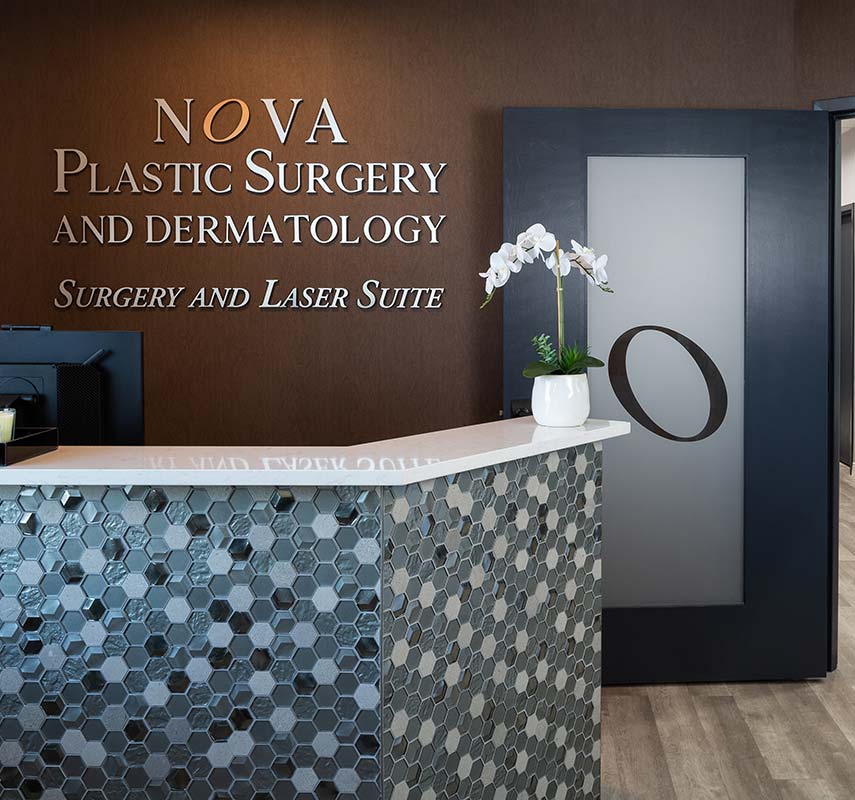
Facial Implants
What Are Facial Implants?
Facial implants are small pieces of shaped medical-grade silicone or various porous materials that are used to contour the face. The most common areas for facial implants are the cheeks, chin, and the jawline.
Why Get Facial Implants?
A small or receding chin, weak jawline, or flat cheekbones might not project the confidence and strength you feel about yourself. Strengthening these areas of the face and evening out the proportions of your features can help you show the world a face that truly reflects how you feel, and can improve your self-confidence.
Facial implants are used to define specific areas of the face that are not as contoured as you would like. If your chin does not project out in proportion to the position of your cheeks and forehead, it can make it look like your neck and lower face are less thin than they really are. Chin implants will give your chin a stronger, more pronounced projection, resulting in a thinner-looking profile.
Jaw implants are used to widen the jaw line and the lower third portion of the face. A weak jaw will blend into the neck, or blend into the ears without a defined slope. Jaw implants will give the face a defined and angular separation from the neck. Cheek implants can provide sharper, more defined cheekbones, which will help with recessed or flat cheeks.

Who is a Good Candidate for Facial Implants?
A good candidate for facial implants will be in general good health, and will have fully matured facial and skull bones. There is no “right” age for getting facial implants, though the required physical maturity doesn’t come until late adolescence. Non-smokers are better candidates for plastic surgery than smokers because smoking interferes with the healing process.
Good candidates will have a positive outlook, healthy self-image, and will be getting surgery for their own reasons- not to satisfy anyone else in their life.
It is also important that the candidate have realistic expectations of the outcome of facial implant surgery. While it can contour your face and bring more balance and aesthetic proportion to your features, it will not completely change your appearance. And while facial implants can be used to encourage symmetry of the facial features, no one’s face is perfectly symmetrical, with or without implant surgery.
Contact UsWhere Can I Get Facial Implants?
Facial implants can be used on any feature of the face, including the nose, chin, cheeks, and jaw. The latter three are the most common areas for implants. You can also get facial implants as a complimentary procedure to another surgery, such as a facelift or neck lift.
How Do I Prepare for Surgery?
Your surgeon will examine and evaluate your facial features, discuss your desired outcome, and help you select the type and size of implant that is most appropriate for you.
You will need to quit smoking six weeks before the surgery. Your surgeon will probably direct you to stop taking blood thinning medications or herbal supplements about two weeks before the surgery. You may need to stop eating or drinking at a certain time the night before, as well. There may be some lab tests that need to be done beforehand, to make sure you are in good health.

How is the Facial Implant Procedure Done?
The incision site will, of course, depend on what implants you are getting. For chin implants, an incision may be made under the chin or inside the mouth where the lower lip meets the lower gum line. Jaw implants also usually require incisions in the mouth, back near the molars at the base of the gum line and the lower cheek. With facial cheek implants, an incision may be made in the mouth, under the lower eyelid, or in the scalp, behind the hairline.
Depending on what type of implant you are getting, the surgery will take from 30 minutes to two hours. After making the incision, the surgeon will create a pocket in the desired area and place the implant. In some cases, the implants will need to be anchored with surgical screws. The incision will then be closed with surgical tape or sutures.
What is Facial Implant Surgery Recovery Like?
You will probably experience some tenderness or tightness in the surgical area, as well as swelling and bruising. The swelling will start to go down within about one week. You might have some difficulty moving your mouth or other facial muscles, depending on the type of implants you get and where they are placed.
Stitches will begin to dissolve or will be removed after seven to 10 days. Prior to the stitches being removed, be sure to follow all post-operative instructions about keeping the incision site clean and dry. Any discomfort you have can be managed with a prescription from your surgeon.
You should be able to go back to work within one to two weeks, though you will need to continue to avoid strenuous activity for four to six weeks. The swelling will totally subside and your permanent results will be visible within three to six months.
What Are the Risks of Facial Implants?
These risks include bleeding, infection, scarring, numbness or other changes in skin sensation, nerve damage, scar tissue formation, the development of firmness around the implant, skin discoloration, and the need for revisional surgery if the implants shift. Your surgeon will discuss the risks in more detail during your consultation.
You can minimize your risk of complications by selecting a Board Certified Plastic Surgeon in Northern Virginia for facial implant surgery. Board Certified surgeons are properly trained and more than adequately equipped to perform the procedure. They use all necessary sterilization procedures, and utilize first-rate staff and surgical centers. Our Board Certified surgeons, Dr. Nukta and Dr. Zahir, will explain all the necessary pre- and post-operative steps to take to help minimize the occurrence of complications.
